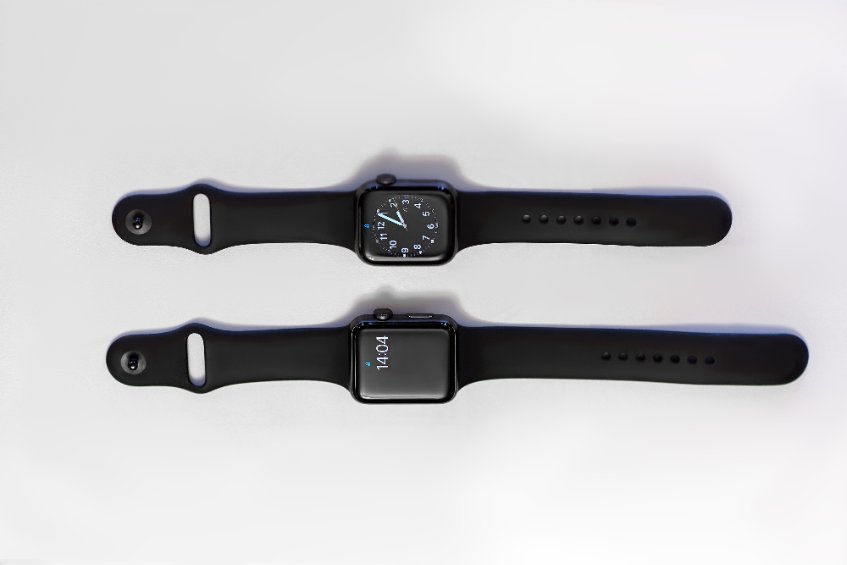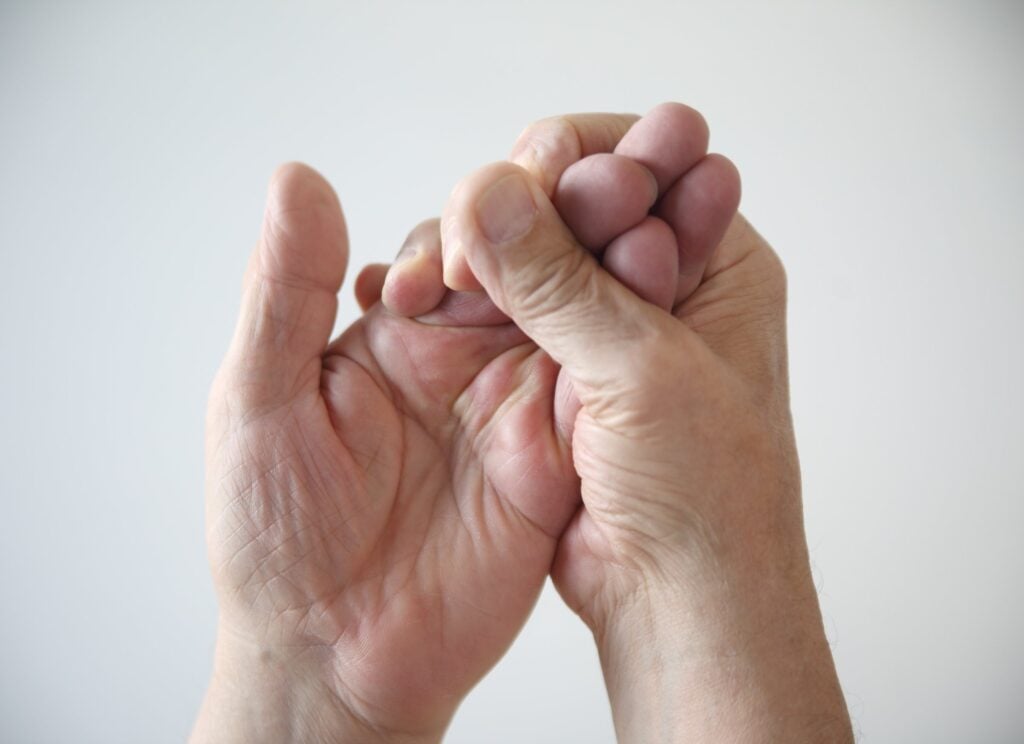Can Wearing An Apple Watch Cause Arm Pain?
You may be concerned about pain and health risks that are said to be linked to Apple watches. Arm and wrist pain is a common complaint among Apple watch users. Here’s why and how to avoid it.
An Apple watch can cause pain in the arm, wrist, hand, and shoulder if it’s worn too tightly. When the watch is too snug and/or too close to the wrist, it can spend a lot of time squeezing the bones and nerves there, which results in tingling, pain, numbness, or weakness in the hand.
Let’s put your mind to rest about the safety of wearing Apple watches by looking at what the actual problem is and how to fix it.

Are there Any Health Risks to Wearing an Apple Watch?
You might have some concerns about the safety of wearing an Apple watch. Let’s look at two of those possible concerns.
Nerve Issues
The band of your Apple watch can cause issues if you wear it too tightly or too close to your hand. When you wear your watch like this, the band puts frequent or constant pressure on your carpal bones, especially the pisiform bone. That’s a delicate little bone on the outward side of your wrist.
It also squeezes the nerves that run through the wrist, and nerves don’t like to be squeezed. When the nerves are pressed like this for long periods of time, you will start to get some nerve pain, which may cause you to feel a tingling sensation, your hand muscles to get weak, or even numbness in your arm, wrist, or hand.
If this persists for long enough, you might even end up with some nerve damage, which may mean that you will feel pain in other parts of your arm, hand, or shoulder. If you suffer from Carpal Tunnel, this will most likely make those symptoms worse.
To avoid this problem, simply loosen the band a little or wear it higher up your arm, away from your wrist. That will take the pressure off of the small wrist bones and the nerves around them.
Instead, a thicker, more protected part of your arm will take the pressure, but that’s fine. The bones and muscles that are there are bigger and harder, and they can take the pressure with no problems.
Radio Frequencies
Some people think that the frequencies sent out by Apple watches are a health concern, but if your arm starts to hurt while you’re wearing an Apple watch, radiation is the wrong thing to blame.
To be clear, radiation is the name for any moving photons. Yes, gamma rays, X-rays, and UV rays are included in that, but so is all visible light, which isn’t harmful. It’s a spectrum (literally!) and radio waves, which are the type of radiation used by Apple watches and other mobile devices, are on the far end and not harmful at all.
The CDC and World Health Organization both agree that the radiation from these devices doesn’t cause any immediate health issues.
It’s still up in the air about whether exposure to radio waves over years or decades could cause cancer, but even if it did, you would have to get rid of all of your mobile devices in order to avoid those waves, and you’d still be exposed to the waves that are floating around in the air looking for an antenna.
That’s not even mentioning the Cosmic Microwave Background, which is everywhere. So, there’s really no avoiding exposure to low-frequency radiation.
All things considered, radio waves really aren’t anything to worry about. If they were, we’d also have to worry about how visible light hurts us because visible light has a higher frequency than radio waves.
Should You Wear Your Apple Watch all the Time?
Your Apple Watch shouldn’t bother you if you wear it correctly, but even so, you will want to take it off when you’re not using it. It’s fine to wear it to bed to track your sleep, and it’s even okay to tighten it while you work out so that it doesn’t slip too much or fall off. However, it’s a good idea to take it off occasionally.
An Apple watch is a useful tool for tracking sleep, heart rate, and other lifestyle data, but you don’t have to wear it all the time. If you’re taking a break or sitting down for a long period of time, that’s a good time to take it off. During that time, you might turn it off or charge it, giving the battery a break to help it last longer.
Taking off the watch also gives your skin a break, which is a good thing. Sweat tends to build up behind the watch as you wear it, and it’s a good idea to take some time to clean off that sweat and let the skin breathe.
If you don’t let your skin breathe, you could get a rash, which won’t be fun, especially as your Apple watch rubs against it repeatedly.
Can an Apple Watch Cause Hand Numbness?

If you wear it incorrectly, an Apple watch can cause numbness. This numbness can either be a result of nerve pain or the circulation in the wrist or arm being slowed.
We discussed earlier how an Apple watch can cause nerve pain if it’s worn too tightly or too close to the wrist. When it’s worn like that, it squeezes the nerves, and that can result in weakness and numbness in the hand.
An Apple watch that squeezes too tightly can also cut off the circulation to your wrist. That means the blood won’t be able to get past the wrist and into the hand. Because of that, the hand will run out of oxygen, or “fall asleep” as we sometimes say.
The hand will numb and be hard to move, and when you take the Apple watch off and start moving your hand, you’ll get that sense of pins and needles all over it as it starts to “wake up”.
Both of these issues can be avoided by wearing the watch correctly. It should be snug, but not too tight, and it should be a couple of inches away from your wrist to avoid bothering the bones and nerves in the wrist.
